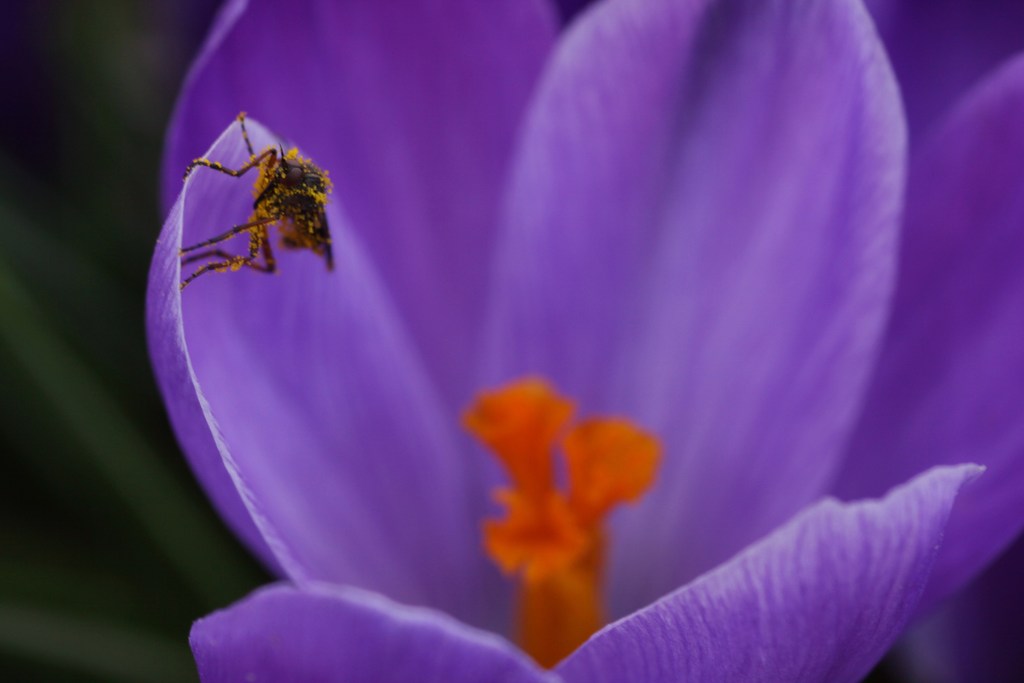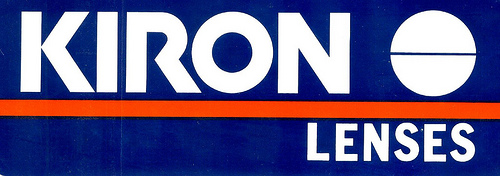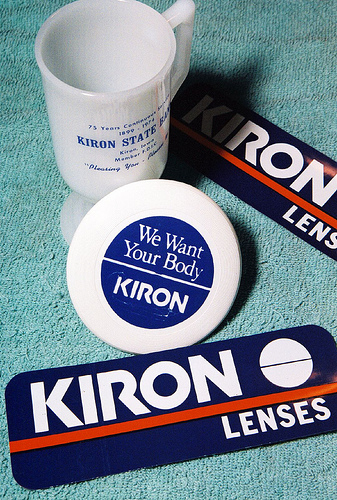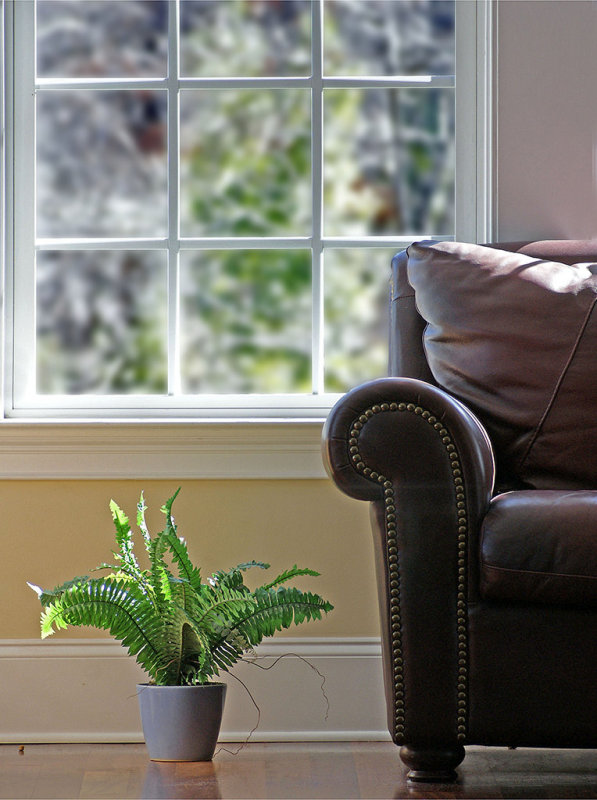| View previous topic :: View next topic |
| Author |
Message |
woodrim


Joined: 14 Jan 2010
Posts: 4060
Location: Charleston
|
 Posted: Sat Feb 20, 2010 2:50 pm Post subject: Posted: Sat Feb 20, 2010 2:50 pm Post subject: |
 |
|
woodrim wrote:
JerryMk: Nice galleries. The in-flight pictures are great catches. I would venture to guess for each successful one there are a dozen that missed. Either that or you're really quick. The water droplet shots are my favorites, and they're easier to get your subject to be still.
In some shots your depth of focus seems quite deep. Are you up around f/16? Or a better question might be, how do you manage your focus? One other question, and I'm not being a wise guy, is "Sunbading" a type of butterfly or did you misspell sunbathing?
Nice to see a picture or two from the lens that isn't macro. So many people seem to think its only use is macro. My Vivitar is only usable in macro right now, but I anticipate using it frequently for portrait and general photography.
_________________
Regards,
Woodrim |
|
| Back to top |
|
 |
woodrim


Joined: 14 Jan 2010
Posts: 4060
Location: Charleston
|
 Posted: Sat Feb 20, 2010 3:25 pm Post subject: Posted: Sat Feb 20, 2010 3:25 pm Post subject: |
 |
|
woodrim wrote:
Im finding the focusing of the 200mm to be challenging. I seem to frequently focus a few inches past the point I'm trying to focus on. It very well could be me, but I'm wondering about my focus confirm function too. You'll see what I mean with the above picture of my daughter. I was outside with the lens and was getting one decent picture per dozen. I'm beginning to think we just have blurry squirrels around here. In a very controlled situation, I was able to get some very sharp pictures, so it's just my focusing abilities in question. Here are a few where I got the focus (more or less):

At four foot minimum focus distance:

25% crop:

100% crop:

_________________
Regards,
Woodrim |
|
| Back to top |
|
 |
Big Dawg


Joined: 28 Jan 2009
Posts: 2530
Location: Thach Alabama
|
 Posted: Sat Feb 20, 2010 4:29 pm Post subject: Posted: Sat Feb 20, 2010 4:29 pm Post subject: |
 |
|
Big Dawg wrote:
Sweet looking lens Woodrim.
_________________
Big Dawg |
|
| Back to top |
|
 |
cooltouch


Joined: 15 Jan 2009
Posts: 9097
Location: Houston, Texas
|
 Posted: Sat Feb 20, 2010 4:31 pm Post subject: Posted: Sat Feb 20, 2010 4:31 pm Post subject: |
 |
|
cooltouch wrote:
Hey Woodrim,
It might not be you at all. It might be your camera's focusing screen. What camera are you using?
I have a Canon XS (1000D), and it, along with a lot of other crop-body DSLRs, have an issue with their focusing screens that doesn't show up until one tries to use manual focus lenses at apertures wider than about f/4. I don't know if full-frame DSLRs, or even the better crop bodies (like the 50D for example), have this same issue, but I suspect not. The focusing screen in my camera, for example, shows images as if the lens is stopped down to f/4. The result to this is that, when taking pictures at apertures wider than this, it's a really hit-or-miss process, since one cannot visually confirm the precise point of focus. Using Live View gets around this problem. So, whenever I possibly can, I'll use LV when shooting with a fast manual focus lens wide open.
This phenomenon has been explained at a few sites on the 'net, and it has to do with the way the focusing screen gathers light. Many people are unaware of this, and incorrectly chalk it up to poor manual focusing skills. But it can be proved easily enough -- I find it quite odd, when I mount my 50mm f/1.4 Nikkor onto my Canon DSLR for example, to be looking at a subject through my camera's viewfinder and stopping down the aperture and not see any decrease in light or effect on depth of field until I turn the aperture ring past f/4. Performing this simple procedure confirms whether or not this is an issue with your camera.
_________________
Michael
My Gear List: http://michaelmcbroom.com/photo/gear.html
My Gallery: http://michaelmcbroom.com/gallery3/index.php/
My Flickr Page: https://www.flickr.com/photos/11308754@N08/albums
My Music: https://soundcloud.com/michaelmcbroom/albums
My Blog: http://michaelmcbroom.com/blogistan/ |
|
| Back to top |
|
 |
JerryMK

Joined: 16 Apr 2009
Posts: 98
|
 Posted: Sat Feb 20, 2010 7:45 pm Post subject: Posted: Sat Feb 20, 2010 7:45 pm Post subject: |
 |
|
JerryMK wrote:
| woodrim wrote: |
JerryMk: Nice galleries. The in-flight pictures are great catches. I would venture to guess for each successful one there are a dozen that missed. Either that or you're really quick. The water droplet shots are my favorites, and they're easier to get your subject to be still.
In some shots your depth of focus seems quite deep. Are you up around f/16? Or a better question might be, how do you manage your focus? One other question, and I'm not being a wise guy, is "Sunbading" a type of butterfly or did you misspell sunbathing?
Nice to see a picture or two from the lens that isn't macro. So many people seem to think its only use is macro. My Vivitar is only usable in macro right now, but I anticipate using it frequently for portrait and general photography. |
@Boomer Depp: I have the Tokina quite a while now, 10 months or so. Compared to the other lenses I find the Tokina easiest to handle. The only drawback is it doesn't reach 1:1 without the macro extender.
@Woodrim: Regarding the in flights, yes these take practice and sometime it takes some shots to get a good keeper. Dealing with focussing is not so hard with the liveview on my Panny G1 is my experience.
I use the tokina from aperture 2.5 to 16 depending on the circumstances. Most of the time I do not go smaller than aperture 4 and than the dof is a challenge.
About sunbading you are right  . Let's put it this way, my Dutch is much better than my English . Let's put it this way, my Dutch is much better than my English  |
|
| Back to top |
|
 |
woodrim


Joined: 14 Jan 2010
Posts: 4060
Location: Charleston
|
 Posted: Sun Feb 21, 2010 12:28 am Post subject: Posted: Sun Feb 21, 2010 12:28 am Post subject: |
 |
|
woodrim wrote:
| JerryMK wrote: |
@Woodrim: Regarding the in flights, yes these take practice and sometime it takes some shots to get a good keeper. Dealing with focussing is not so hard with the liveview on my Panny G1 is my experience.
I use the tokina from aperture 2.5 to 16 depending on the circumstances. Most of the time I do not go smaller than aperture 4 and than the dof is a challenge.
About sunbading you are right  . Let's put it this way, my Dutch is much better than my English . Let's put it this way, my Dutch is much better than my English  |
JerryMK: Many people say in their profile where they are from, but yours did not say. Now knowing that you are from Holland, I'm impressed with your English. In fact, I'm impressed with most people's language skills on this forum. Here in the US we take English for granted - that is, that everyone will speak it. I admire those with multi-lingual skills.
_________________
Regards,
Woodrim |
|
| Back to top |
|
 |
Boomer Depp


Joined: 08 Oct 2009
Posts: 552
Location: Kingston,Washighton
Expire: 2011-12-04
|
 Posted: Sun Feb 21, 2010 4:33 am Post subject: Posted: Sun Feb 21, 2010 4:33 am Post subject: |
 |
|
Boomer Depp wrote:
| cooltouch wrote: |
Hey Woodrim,
I have a Canon XS (1000D), and it, along with a lot of other crop-body DSLRs, have an issue with their focusing screens that doesn't show up until one tries to use manual focus lenses at apertures wider than about f/4. I don't know if full-frame DSLRs, or even the better crop bodies (like the 50D for example), have this same issue, but I suspect not. |
No problem on the 50D or the 5D II...screen brightest wide open and gets progressively dimmer as you stop down with manual lens.
Woodrim...Looks like you've got yourself a good lens...looks like you nailed the focus...very nice....as for not nailing the focus on the other pic,you probably just missed it...take your time and be critical about the focus...pick a high detail point....focus...then move in and out a hair and see if your focus improves at all.
Jerry....Nice pics! BTW what is it about the Tokina you like better then the Kiron and the Vivitar?
_________________
Trust that little voice in your head that says "Wouldn't it be interesting if...." And then do it. |
|
| Back to top |
|
 |
Boomer Depp


Joined: 08 Oct 2009
Posts: 552
Location: Kingston,Washighton
Expire: 2011-12-04
|
 Posted: Sun Feb 21, 2010 5:33 am Post subject: Posted: Sun Feb 21, 2010 5:33 am Post subject: |
 |
|
Boomer Depp wrote:
Woodrim...I sometimes have days sometimes when if I don't tell myself to slow down and be patient,I can't nail my focus if my life depended upon it....
Blooming Crocus





_________________
Trust that little voice in your head that says "Wouldn't it be interesting if...." And then do it. |
|
| Back to top |
|
 |
cooltouch


Joined: 15 Jan 2009
Posts: 9097
Location: Houston, Texas
|
 Posted: Sun Feb 21, 2010 7:06 am Post subject: Posted: Sun Feb 21, 2010 7:06 am Post subject: |
 |
|
cooltouch wrote:
| woodrim wrote: |
JerryMK: Many people say in their profile where they are from, but yours did not say. Now knowing that you are from Holland, I'm impressed with your English. In fact, I'm impressed with most people's language skills on this forum. Here in the US we take English for granted - that is, that everyone will speak it. I admire those with multi-lingual skills. |
A big +1 on that one. I've got a couple of degrees in Linguistics, and even I'm not all that fluent in languages other than English. My family puts me to shame. My daughter is bilingual, my wife is tri-lingual, and my mother-in-law is quadra-lingual.
_________________
Michael
My Gear List: http://michaelmcbroom.com/photo/gear.html
My Gallery: http://michaelmcbroom.com/gallery3/index.php/
My Flickr Page: https://www.flickr.com/photos/11308754@N08/albums
My Music: https://soundcloud.com/michaelmcbroom/albums
My Blog: http://michaelmcbroom.com/blogistan/ |
|
| Back to top |
|
 |
woodrim


Joined: 14 Jan 2010
Posts: 4060
Location: Charleston
|
 Posted: Sun Feb 21, 2010 9:14 pm Post subject: Posted: Sun Feb 21, 2010 9:14 pm Post subject: |
 |
|
woodrim wrote:
| cooltouch wrote: |
Hey Woodrim,
It might not be you at all. It might be your camera's focusing screen. What camera are you using?
I have a Canon XS (1000D), and it, along with a lot of other crop-body DSLRs, have an issue with their focusing screens that doesn't show up until one tries to use manual focus lenses at apertures wider than about f/4. I don't know if full-frame DSLRs, or even the better crop bodies (like the 50D for example), have this same issue, but I suspect not. The focusing screen in my camera, for example, shows images as if the lens is stopped down to f/4. The result to this is that, when taking pictures at apertures wider than this, it's a really hit-or-miss process, since one cannot visually confirm the precise point of focus. Using Live View gets around this problem. So, whenever I possibly can, I'll use LV when shooting with a fast manual focus lens wide open.
This phenomenon has been explained at a few sites on the 'net, and it has to do with the way the focusing screen gathers light. Many people are unaware of this, and incorrectly chalk it up to poor manual focusing skills. But it can be proved easily enough -- I find it quite odd, when I mount my 50mm f/1.4 Nikkor onto my Canon DSLR for example, to be looking at a subject through my camera's viewfinder and stopping down the aperture and not see any decrease in light or effect on depth of field until I turn the aperture ring past f/4. Performing this simple procedure confirms whether or not this is an issue with your camera. |
cooltouch/Michael: I'm having trouble understanding how the focusing screen can have that effect on light intensity, but maybe the focusing part I can understand. Not so much the screen characteristics, but is it possible that the screen focus is not consistent with the sensor focus point? I tried a test today with limited success. I was marking focus points and taking the pictures - then looking to see the actual point of focus. The test results weren't consistent enough to be conclusive, but the focus was beyond my target in a few of the tests, consistent with my previous experience. I'll have to do some more tests using a tripod.
My camera is a Sony A200. No live view.
_________________
Regards,
Woodrim |
|
| Back to top |
|
 |
JerryMK

Joined: 16 Apr 2009
Posts: 98
|
 Posted: Sun Feb 21, 2010 9:27 pm Post subject: Posted: Sun Feb 21, 2010 9:27 pm Post subject: |
 |
|
JerryMK wrote:
[quote="Boomer Depp"]
| cooltouch wrote: |
| Jerry....Nice pics! BTW what is it about the Tokina you like better then the Kiron and the Vivitar? |
This (just the fantastic bokeh rendering! and the feeling/handling of the lens.):


 |
|
| Back to top |
|
 |
cooltouch


Joined: 15 Jan 2009
Posts: 9097
Location: Houston, Texas
|
 Posted: Sun Feb 21, 2010 11:43 pm Post subject: Posted: Sun Feb 21, 2010 11:43 pm Post subject: |
 |
|
cooltouch wrote:
| woodrim wrote: |
cooltouch/Michael: I'm having trouble understanding how the focusing screen can have that effect on light intensity, but maybe the focusing part I can understand. Not so much the screen characteristics, but is it possible that the screen focus is not consistent with the sensor focus point? I tried a test today with limited success. I was marking focus points and taking the pictures - then looking to see the actual point of focus. The test results weren't consistent enough to be conclusive, but the focus was beyond my target in a few of the tests, consistent with my previous experience. I'll have to do some more tests using a tripod.
My camera is a Sony A200. No live view. |
As I mentioned above, this phenomenon doesn't seem to affect all DSLRs. But it for sure affects the ones with the tiny squinty viewfinders, like Canon's Rebel series -- the xxxD and 1000D series in Europe. Apparently the larger Canon crop body cameras, with their larger viewfinders -- aka the xxD series -- do not have this problem. And it seems Canon's ff cameras don't. I really can't comment on other makes.
Here is the best explanation I've found for the phenomenon so far, although I suspect there are better ones out there somewhere:
http://www.jayandwanda.com/photography/dslr_man_focus/man_focus.html
_________________
Michael
My Gear List: http://michaelmcbroom.com/photo/gear.html
My Gallery: http://michaelmcbroom.com/gallery3/index.php/
My Flickr Page: https://www.flickr.com/photos/11308754@N08/albums
My Music: https://soundcloud.com/michaelmcbroom/albums
My Blog: http://michaelmcbroom.com/blogistan/ |
|
| Back to top |
|
 |
woodrim


Joined: 14 Jan 2010
Posts: 4060
Location: Charleston
|
 Posted: Mon Feb 22, 2010 1:37 am Post subject: Posted: Mon Feb 22, 2010 1:37 am Post subject: |
 |
|
woodrim wrote:
Okay, I've read the explanation and I suppose it kind of, maybe, sort of makes sense. I was trying to relate it to what I was experiencing while looking into the viewfinder. The focus is indeed very difficult with a small amount of barrel rotation in either direction that is nearly impossible to differentiate in focus. As for changes in brightness with aperture stop down, I'll agree that from max f/3 to f/4 is negligible, but I can see a difference going to f/5.6 for sure.
Today I resumed my exercises with the 200mm in order to further test the focus issue as well as get to know the lens' characteristic strengths and weaknesses. I tripod mounted today - something I now highly recommend with this focal length. In addition to the possible focusing issues, there is additional doubt cast on my abilities to stay at that same distance after manually stopping down the aperture when doing close up work. The tripod resolves that issue. At some point during the session I started doing the focusing while at f/4.5 or 5.6, I don't remember which. It actually got easier to focus. So if I'm right about that, and my focus got more accurate, it may support the focusing screen theory. However, in lower light situations, shouldn't the issue be negated even when at wide apertures? I will follow this post with some sample images.
_________________
Regards,
Woodrim |
|
| Back to top |
|
 |
woodrim


Joined: 14 Jan 2010
Posts: 4060
Location: Charleston
|
 Posted: Mon Feb 22, 2010 3:32 am Post subject: Posted: Mon Feb 22, 2010 3:32 am Post subject: |
 |
|
woodrim wrote:
JerryMk and Boomer: Isn't the Vivitar Series 1 90mm f/2.5 and the Tokina actually the same lens? The Vivitar was made by Tokina and was nicknamed the Bokina after its maker and great bokeh.
I've been talking about my newest addition, the Series 1 200mm f/3. I'm still getting to know this lens. I am discovering in addition to the focusing challenges, there are other characteristics that must be considered and managed in order to get the best images. The lens definitely has strengths and weaknesses. Despite the focusing problems, which might at times lead one to question resolution, the lens is actually quite sharp. It is a wonderful close focus lens with a minimum distance of 120cm or just under four feet. Honestly, I thought I was even closer than that. The surroundings have been rather bland since this is winter, so it's hard to evaluate the color, although initially I will have to say neutral. The bokeh is quite interesting, very creamy wide open and busy but still interesting when stopped down.
The lens has much more CA than I had expected; in fact, more than any other lens I've used. This requires one to use the lens cautiously in high CA type environments. Stopping down helps, but it's more gradual than I would like. In the most severe situations, it may take f/11 to fully escape CA. The big issue with the CA problem is that it limits your ability to take full advantage of the lens' wonderful bokeh when fully open. Although, when fully open it also is subject to ghosting, although that goes away very quickly with an aperture change.
Once finding this lens' strengths and understanding its weaknesses, it can be a great contributor and provide wonderful results. It is especially nice as a close focus lens. Although longer than customary portrait lenses, I like the image it provides.
Wide open is reasonably sharp, but loaded with CA:

Stopped down to around f/8, gets very sharp and CA all but gone. Bokeh gets busy:

At f/5.6:

And stopped down to f/11:

Tripod mounted, 25% Crop:

_________________
Regards,
Woodrim
Last edited by woodrim on Mon Feb 22, 2010 7:10 pm; edited 1 time in total |
|
| Back to top |
|
 |
Boomer Depp


Joined: 08 Oct 2009
Posts: 552
Location: Kingston,Washighton
Expire: 2011-12-04
|
 Posted: Mon Feb 22, 2010 7:03 am Post subject: Posted: Mon Feb 22, 2010 7:03 am Post subject: |
 |
|
Boomer Depp wrote:
Woodrim...From my understanding both these Tokina built lenses are the same optical formula.Over at the Kiron Club one of the members did a comparison of about five or six macro lenses.The Tokina was better then the other lens,but he didn't have a Vivitar S1 90/2.5 or the Kiron 105/2.8 in the test group....he did have a Vivitar Series 1 100/2.8 (Kiron built)in the test group.
I've also read where the Tokina is a bit smaller then the Vivitar,with not as large a mount as the Vivitar.I also read at Photodo that the Tokina and Vivitar were tied at third from the top,for the highest resolution of all lens tested at Photodo.
BTW...looks like you were busy doing some lens testing with the 200/3.Was one of those pics a crop,or was that taken with your S1 90/2.5....
Also....got my S1 90/25 and a few other lenses back from my daughter today...I'll take time this week to compare it to the Kiron and Vivitar 135 close focus...but it will be inside test,with equal parallel shooting.I suspect the Vivitar S1 and the Kiron will shoot similar and probably a bit better then the Vivitar 135 close focus.
Below is a review of the Tokina AT-X 90/2.5 macro and touches on it's relation to Vivitar.
courtesy of dpreview-
http://forums.dpreview.com/forums/readflat.asp?forum=1034&message=13056277&changemode=1
Having come late to this excellent forum, and reading Todd's superb review of the Tokina 90mm f2.5, I noted that he would like to hear from someone who has experience with a Vivitar Series 1 90mm f2.5.
I bought mine new in the 1970s and have used it ever since as perhaps the finest lens in my stable of 20+ Nikkors and a myriad of 3rd-party Nikon-mount AI and subsequent lenses, AF included.
Some of the posts mention the origin of early Series 1 lenses, but suggest it's something of a mystery. The development of this particular legendary lens was initiated by Vivitar, a U.S. importer and distributor, but designed by Perkin Elmer, a firm that provided many early NASA optics. Actual manufacture was carried out by a number of different optical companies, including Perkin Elmer, Kiron,Tokina and several others, some well known, some not. All had to measure up to exact specifications and, so far as is known, all were of equal quality. My lens, determined by a coded serial number, was made by Tokina in 1977.
Therein lies a possible explanation of the Tokina 90mm's origin. The Vivitar Series 1 edition ceased production in 1981, and I believe Tokina did not issue theirs until 1984. While in Todd's review he found that Tokina claimed no connection with Vivitar, their identical optical formula and quality production must surely have been a matter of something more than coincidental osmosis.
One review of the early Series 1 lenses mentions a test I also remember at the time it was published in the 1970s: that the Vivitar Series 1 90mm f2.5 "shared the honor with the illustrious Leitz Dual Range Summicron of having the highest resolution of any lenses tested by (Herbert Keppler of) Modern Photography." Another report at the time stated it had the highest resolution of any lens ever tested! No wonder Tokina wanted to get in on the action after Vivitar ceased its first Series 1 line, and they were in a perfect position to do so, having made the Vivtar lens to Perkins Elmer's exact specifications.
The quality of glass, metallurgy, and machining in the Series 1 90mm f2.5 is everything that various postings have said about the Tokina 90mm. I have a number of great lenses, but not one of them is superior in any respect to the Series 1. (I also have the famed Vivitar Series 1 90-180mm f4.5 macro zoom, originally designed for medical purposes and just as impressive as the 90mm). My 90mm is now approaching 30 years old, has traveled around the world and operated under all kinds of challenging field conditions while I worked on various National Geographic projects. But it still looks and operates like a new lens (obviously I cherish and protect it) and is just as useful with a DSLR as it was with the big film SLRs, now mostly retired to a lab closet.
So I'm sure the Tokina ATX is its equivalent because I strongly suspect there is a clear relationship, whether Tokina officials today admit or remember, or not.
I wonder how many of these lenses are still in use? I've seen them on eBay for modest sums---I guess people either (a) don't realize what miraculous lenses they are, or (b) don't want a non-AF, non-metering, heavy lens with an additional optical converter to achieve 1:1. Too bad.
One last item: Because the 90mm f2.5 is in fact heavy and large, precious and difficult to replace even back in the 1970s, for rugged, hazardous field work and as a "disposable lens" I shortly thereafter bought a Vivitar 90mm f2.8 with a single mount that focuses 1:1. I've heard its optical formula is just about the same as the f2.5, but it was less expensive because the mount was not so heavily made. Despite that, it has served extremely well and is in as good shape today as when I got it. But when it comes to the most important work under reasonable conditions, the f2.5 is the one to use!
Excuse the length of this post, but it's not often that I have a chance to praise a 30-year-old lens that has been so important to me over the years.
_________________
Trust that little voice in your head that says "Wouldn't it be interesting if...." And then do it.
Last edited by Boomer Depp on Mon Feb 22, 2010 9:51 pm; edited 11 times in total |
|
| Back to top |
|
 |
Russ

Joined: 26 Feb 2007
Posts: 432
|
 Posted: Mon Feb 22, 2010 7:18 am Post subject: Posted: Mon Feb 22, 2010 7:18 am Post subject: |
 |
|
Russ wrote:
Alright, who's trash talking my Kiron Klub?  I started it years ago, and it's gained a modest amount of popularity. However, we discuss just about any lens make. Not just Vivitar's and Kiron's. I started it years ago, and it's gained a modest amount of popularity. However, we discuss just about any lens make. Not just Vivitar's and Kiron's.



Kiron Kid
_________________
'A photograph that mirrors reality, cannot compare to one that reflects the spirit"
Russ |
|
| Back to top |
|
 |
Boomer Depp


Joined: 08 Oct 2009
Posts: 552
Location: Kingston,Washighton
Expire: 2011-12-04
|
 Posted: Mon Feb 22, 2010 7:31 am Post subject: Posted: Mon Feb 22, 2010 7:31 am Post subject: |
 |
|
Boomer Depp wrote:
Care to weigh in on this topic Russ? Also can you download the link to the PDF of Bruce Edinger's macro test?
_________________
Trust that little voice in your head that says "Wouldn't it be interesting if...." And then do it. |
|
| Back to top |
|
 |
woodrim


Joined: 14 Jan 2010
Posts: 4060
Location: Charleston
|
 Posted: Mon Feb 22, 2010 3:05 pm Post subject: Posted: Mon Feb 22, 2010 3:05 pm Post subject: |
 |
|
woodrim wrote:
Nice post, Boomer. If you're asking me if the bee picture was taken with the S1 90mm, and especially after praising the 90mm, then that's a compliment to my S1 200mm. The bee picture is a modest 25%crop. The other pictures were cropped as well to varying degrees.
For yours and others information, I had been tracking the rare occasions when the S1 90mm f2.5 would appear on ebay before finally buying mine from B&H for $100, complete with 1:1 adapter and in excellent condition. Prices were higher on ebay, but it also varied by mount type. Recently an M42 version sold out of Germany for $300. That's the highest I've seen, but obviously due to the mount type. Nikon, Pentax PK, and Olympus will also get elevated prices. But here's something people here should know if they want to buy one of these and convert the mount, the Minolta mount version is very easy to convert. The mount is very thick, allowing for the necessary adjustments to fit most other mounts. Some lenses with shallow or recessed mounts require much more invasive surgery to convert. Here's a look at the Minolta mount:

And here is the adapter converted for a 1mm registration distance difference:

I'm slow, so the conversion of the lens itself isn't completed yet. However, when it does get done I won't be able to use it anymore with the 1:1 adapter. As of now I do not intend to convert the adapter; I'll just use some of my other old Minolta lenses with it. If I get real itchy, I'll buy another adapter and convert that one.
Using the adapter with the 90mm, this picture is a 33% crop from a five dollar bill (with one of my hairs):

And this is a picture using the adapter with a standard issue Vivitar 200mm:

_________________
Regards,
Woodrim |
|
| Back to top |
|
 |
Boomer Depp


Joined: 08 Oct 2009
Posts: 552
Location: Kingston,Washighton
Expire: 2011-12-04
|
 Posted: Mon Feb 22, 2010 10:05 pm Post subject: Posted: Mon Feb 22, 2010 10:05 pm Post subject: |
 |
|
Boomer Depp wrote:
Looks like you've got some nice glass and you nailed your focus.
Speaking of your focusing issues...is the Katz Eye focusing screen available for your camera...
http://www.katzeyeoptics.com/page--Custom-Focusing-Screens--store.html
or perhaps this for much less then the Katz Eye from B&H with an acute matte surface that aids in precision focusing.
http://www.bhphotovideo.com/c/product/608707-REG/Sony_FDA_FM1AM_Type_M_Focusing_Screen.html
or if you like gridded focus screens...
http://www.bhphotovideo.com/c/product/608706-REG/Sony_FDA_FL1AM_Type_L_Focusing_Screen.html#reviews
_________________
Trust that little voice in your head that says "Wouldn't it be interesting if...." And then do it. |
|
| Back to top |
|
 |
woodrim


Joined: 14 Jan 2010
Posts: 4060
Location: Charleston
|
 Posted: Tue Feb 23, 2010 1:43 am Post subject: Posted: Tue Feb 23, 2010 1:43 am Post subject: |
 |
|
woodrim wrote:
I don't see my camera represented in any of those product offerings. I wonder what Sony might have to say about it. Whether they like it or not, the camera manufacturers better get on board with customers' requirements regarding these MF lenses.
_________________
Regards,
Woodrim |
|
| Back to top |
|
 |
slick204
Joined: 23 Feb 2010
Posts: 17
Location: Iowa, USA
Expire: 2012-04-22
|
 Posted: Tue Feb 23, 2010 2:12 am Post subject: Posted: Tue Feb 23, 2010 2:12 am Post subject: |
 |
|
slick204 wrote:
Woodrim,
I recently got a Vivitar Series 1 200/3 in a Minolta mount. My intent is to change it to a Pentax K mount. After removing the four screws I can only pull the mount a short distance off the body (~1/8"). Is there some trick to this? Every other lens I've worked on is easily removed.
I figured since you have the Viv 200 and worked on a Minolta mount Viv 90 you might know.
Thanks! |
|
| Back to top |
|
 |
woodrim


Joined: 14 Jan 2010
Posts: 4060
Location: Charleston
|
 Posted: Tue Feb 23, 2010 2:35 am Post subject: Posted: Tue Feb 23, 2010 2:35 am Post subject: |
 |
|
woodrim wrote:
slick: I'll take this offline with a PM. Too much detailed dribble to bother everyone.
_________________
Regards,
Woodrim |
|
| Back to top |
|
 |
woodrim


Joined: 14 Jan 2010
Posts: 4060
Location: Charleston
|
 Posted: Fri Mar 05, 2010 3:04 am Post subject: Posted: Fri Mar 05, 2010 3:04 am Post subject: |
 |
|
woodrim wrote:
Having now learned how to use this lens, I'm very satisfied that it is a very sharp lens. I've learned how to deal with the purple fringing, which was my biggest complaint, and now it's a minor issue. The biggest thing was getting used to the focus and getting it right. The following images can be found here for original image size:
http://www.pbase.com/mdlempert/image/122483908/original
http://www.pbase.com/mdlempert/image/122335799/original


_________________
Regards,
Woodrim |
|
| Back to top |
|
 |
slick204
Joined: 23 Feb 2010
Posts: 17
Location: Iowa, USA
Expire: 2012-04-22
|
 Posted: Fri Mar 05, 2010 3:59 am Post subject: Posted: Fri Mar 05, 2010 3:59 am Post subject: |
 |
|
slick204 wrote:
It looks like you're getting the hang of that lens! They're both very nice.
The final version of the window looks great. You say on PBase that it's HDR. Is that mostly for the window? |
|
| Back to top |
|
 |
Russ

Joined: 26 Feb 2007
Posts: 432
|
 Posted: Fri Mar 05, 2010 4:02 am Post subject: Posted: Fri Mar 05, 2010 4:02 am Post subject: |
 |
|
Russ wrote:
Looks good. Now you'll want the AF version. 
_________________
'A photograph that mirrors reality, cannot compare to one that reflects the spirit"
Russ |
|
| Back to top |
|
 |
|
|
